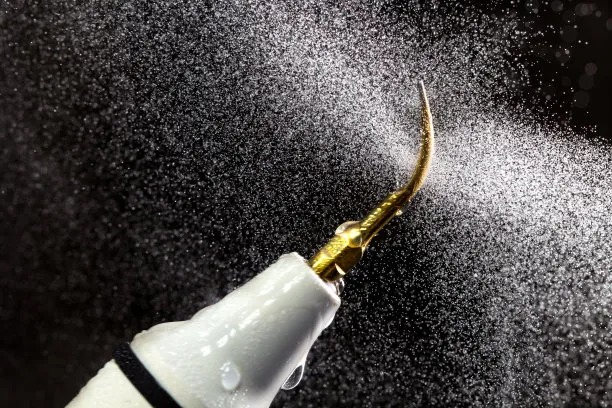Essential Guidelines and Precautions You Should Follow After Receiving a Dental Filling for Optimal Oral Health
Summary: After receiving a dental filling, it is essential to follow certain guidelines and precautions to ensure optimal oral health. This article discusses four key aspects to consider: understanding the types of fillings, post-procedure care, dietary recommendations, and the importance of follow-up appointments. By adhering to these practices, patients can promote healing, maintain the longevity of their fillings, and protect their overall dental well-being. This guide serves as a comprehensive resource to navigate the post-treatment phase effectively.
1. Understanding the Types of Fillings

Dental fillings can be made from various materials, each with its own unique properties and benefits. Common types include amalgam, composite resin, glass ionomer, and resin ionomer. Amalgam is durable and often used for back teeth, while composite resin offers a tooth-colored option for a more aesthetic appearance. Understanding these differences can help patients make informed decisions about their dental care.
Additionally, its important to be aware of the longevity of each type of filling. Amalgam fillings can last over a decade, whereas composite fillings may require replacement sooner due to wear and tear. Keeping these durability factors in mind can help patients plan their dental care and anticipate future appointments.
Moreover, discussions with your dentist about the type of filling chosen can give insights into the best care practices. This knowledge can empower patients to take better control of their oral health moving forward.
2. Post-Procedure Care Guidelines
After receiving a dental filling, it is crucial to adhere to specific post-procedure care guidelines to promote healing. First and foremost, patients should avoid chewing on the side of the mouth where the filling was placed for at least 24 hours. This allows the filling to set adequately and minimizes any discomfort or damage.
Another important guideline is to maintain proper oral hygiene. Patients should continue brushing their teeth twice a day and flossing daily, being careful around the filling area. Using a soft-bristle toothbrush can help prevent irritation, and rinsing with warm salt water can support oral healing.
Moreover, if any discomfort or sensitivity occurs, it’s essential to consult with your dentist. Avoiding over-the-counter pain medications without guidance is advisable, as some may interfere with healing. Close monitoring of your symptoms can ensure any complications are addressed promptly.
3. Dietary Recommendations Following a Filling
Following dental fillings, dietary choices play a crucial role in maintaining oral health. Initially, it is advisable to stick to soft foods for at least 24 hours. Foods such as yogurt, mashed potatoes, and smoothies can provide nourishment without putting stress on the freshly placed filling.
Furthermore, hot or cold beverages should be consumed cautiously, as they can heighten sensitivity temporarily. It is also highly recommended to avoid sticky or hard foods for a few days so as not to dislodge or damage the new filling. Items like caramel or hard candies should be eliminated from your diet during this period.
Additionally, staying hydrated with water or non-acidic drinks will help maintain overall health while minimizing potential irritation to the filling area. Eating balanced meals will also support recovery and overall well-being.
4. Importance of Follow-Up Appointments
Follow-up appointments after receiving a dental filling are vital for ensuring the success of the procedure. During these visits, your dentist can assess the fillings integrity and address any concerns that may arise. These check-ups often include evaluations for potential wear and monitoring for shifts in the bite alignment that may need correction.
Moreover, establishing a routine for regular dental check-ups can not only help identify any issues early but also reinforce good dental habits. Your dentist can provide personalized advice tailored to your dental health, enhancing the longevity of your fillings.
Additionally, if you experience any unusual sensations or persistent pain, make sure to contact your dentist immediately. Prompt attention can prevent more significant issues and ensure that your dental fillings serve their intended purpose effectively.
Summary:
Following dental fillings, understanding the type of filling, adhering to post-procedure care guidelines, making thoughtful dietary choices, and attending regular follow-up appointments are essential for optimal oral health. These steps contribute to the longevity of your fillings and enhance overall dental well-being.
This article is compiled by Vickong Dental and the content is for reference only.


